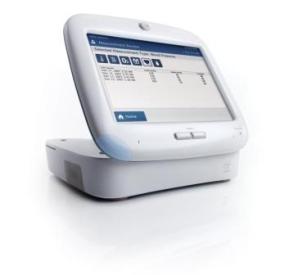
The Health Guide is a single purpose platform to facilitate telehealth by collecting data from devices (heart rate, weight, glucose, etc.) and securely transmitting the data for remote monitoring by a clinician or other caregiver. Intel also states that the Health Guide will also enable secure email communication and delivery of health-related content to the end user (consumer). This is the second product to come out of Intel’s Digital Health Group, the first being a clinician-centric, mobile computing platform, the MCA.
The release of Health Guide follows last month’s announcement by Intel of the social caregiver’s website, ConnectingforCare, which was formed in partnership with the National Family Caregivers Association. This site is still very immature and lacking critical content thus begging the question – Do we really need another social community website such as this when we are already inundated with numerous, healthcare centric social sites?
Reading through some of Intel’s documents (caution PDFs) on their health care evolution and design philosophy, it is clear that Intel has every intention to move from a passive player in the market, supplying microprocessors (chips) to any and all takers, to becoming a direct developer, marketer and seller of devices such as the Health Guide. Intel sees a huge opportunity in the telehealth market to serve an aging baby boomer population that will increasingly use technologies such as this to manage their health, in conjunction with their physician, from the comfort of their home.
Savvy move on Intel’s part as there is indeed a significant opportunity and I see no single dominant player in the market today. Sure, Philips is there as well as Omron and Panasonic, along with GE giving it a close look but no one has taken a commanding lead. Thus, there are no formidable barriers to a new entrant such as Intel. It is still a wide open market.
But in reading the announcement I am struck by the lack of reference on Intel’s part as to how the Health Guide fits into the broader context of care and in particular, electronic records, be they PHR, EMR or EHR. No reference whatsoever on this front which has me quite puzzled as Intel is a key partner in the Personal Health System (PHS) Dossia, which Colin Evans, formerly of Intel, is now leading. This raises a number of questions:
- How will the Health Guide fit into a consumer’s existing PHR such as one from RelayHealth which already has secure physician-consumer communication embedded in the PHR?
- Similarly, how will Health Guide interface to a solution like ICW’s LifeSensor PHR that has a significant number of interfaces to existing biometric devices?
- How might Health Guide integrate into a clinician’s existing workflow and EMR solution and if the clinician offers a patient portal, will Health Guide automatically populate the patient portal with biometric data and any communications that occur electronically?
- What might be the connection between the Health Guide and a PHS. For example, Microsoft’s HealthVault is in many ways similar to Health Guide (at least from a software perspective) in that it offers secure communication of biometric data to a secure server for storage and retrieval? Are these competing solutions or complimentary?
In making the announcement of FDA approval, Intel also stated that the product would not be released to market until late this year or early next. That should give Intel enough time to further clarify the positioning of Health Guide and address the questions above. Otherwise, despite all the bells & whistles, Health Guide will struggle.
For a more positive spin on the Health Guide, here’s a brief interview with the Health Group WW Director of Marketing and Sales.
[youtube=http://www.youtube.com/watch?v=gi9m75BSg4s]




Very well written. This is the kind of information that is useful to those want to increase their SERP’s. Keep up the good work.